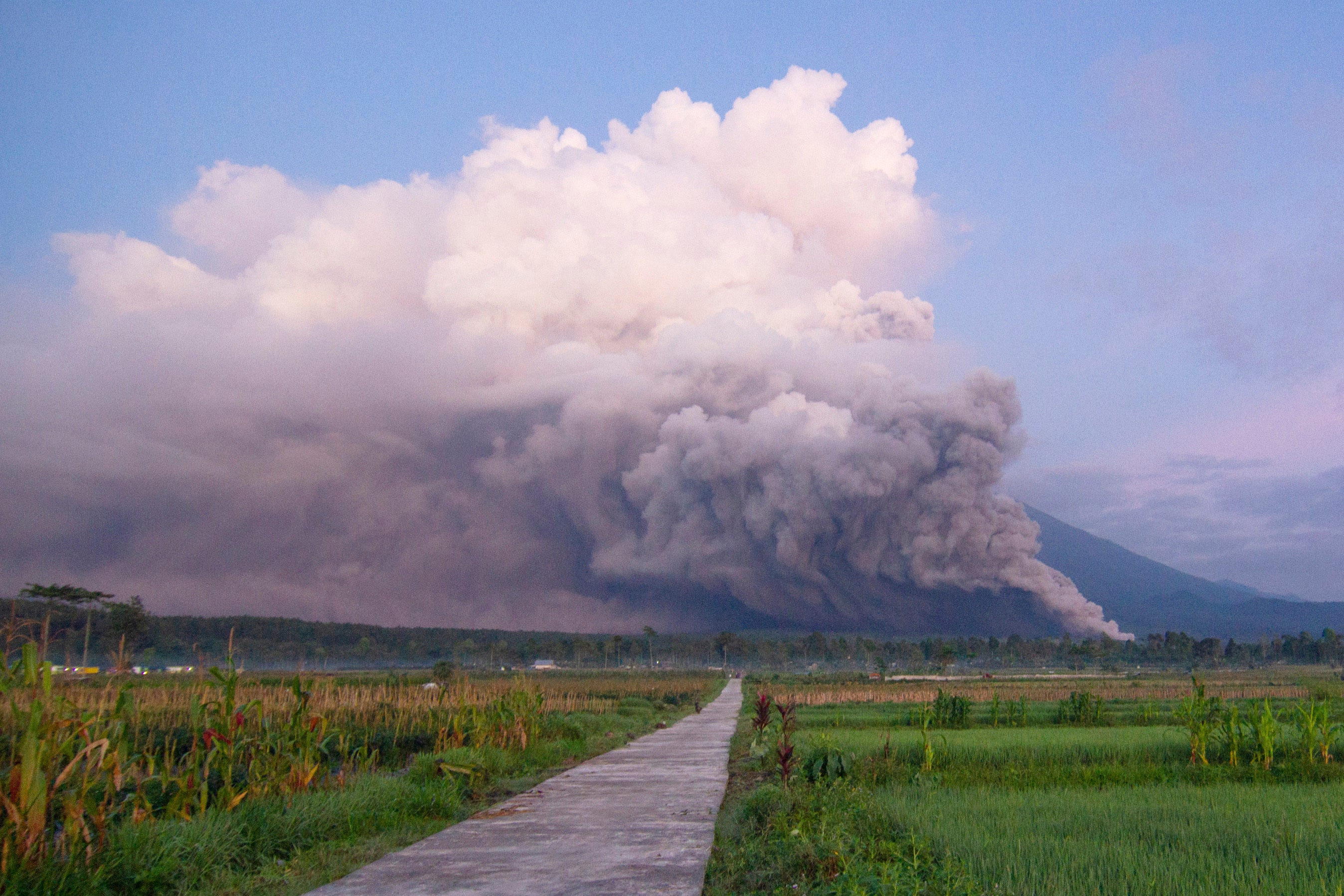Indonesia’s highest volcano erupts as evacuations carried out on most densely populated island
Nearly 2,000 moved to temporary shelters as volcano releases searing gas clouds and rivers of lava
Indonesia’s highest volcano erupted on Sunday, prompting evacuation orders and raising the country’s volcanic activity threat level to its highest after the release of searing gas clouds, rivers of lava and thick plumes of ash that reached nearly 50,000 feet into the sky.
Mount Semeru, a 12,060ft volcano, erupted after monsoon rains eroded its lava dome, leading to its collapse, said Abdul Muhari, spokesperson for the National Disaster Management Agency.
The volcano, located on Java, Indonesia’s most densely populated island, left several villages blanketed in ash and blocked out the sun. The eruption led to thick columns of ash spread over 49,212ft (15km) into the sky, according to Japan’s Meteorology Agency.
Gas and lava flowed down Semeru’s slopes, traveling toward a nearby river.
“Most roads have been closed since this morning and now it is raining volcanic ash and it has covered the view of the mountain,” community volunteer Bayu Deny Alfianto was quoted as saying to Reuters by telephone from near the volcano.
Authorities said no casualties have been reported so far and have warned residents to stay at a distance of 5km from the crater’s mouth.
They have also been warned to keep off the southeastern sector area along the Besuk Kobokan river, located about 13km from the crater.

Indonesia’s disaster mitigation agency (BNPB) said 1,979 people had been moved to 11 shelters and given masks.
Japan’s public broadcaster NHK reported that the country’s Meteorology Agency was monitoring for the possibility of a tsunami after the eruption, but later said that there was no tsunami impact.
Indonesia’s Centre for Volcanology and Geological Hazard Mitigation chief, Hendra Gunawan, said a bigger volume of magma could have built up compared with previous eruptions of the volcano, in 2021 and 2020, which could mean greater danger for a bigger area.
“Semeru’s hot clouds could reach further and at a distance where there are many residences,” he said.
Semeru, also known as Mahameru, has erupted numerous times in the past 200 years. Its last major eruption was in December 2021 which left 51 people dead and several hundreds injured with serious burns.
More than 10,000 villagers were evacuated.
Indonesia is located on the “Pacific Ring of Fire” and has 142 volcanoes. The country has the largest global population living in close proximity to a volcano.
Around 8.6 million Indonesians live within 10km of a volcano.
Additional reporting by agencies
Join our commenting forum
Join thought-provoking conversations, follow other Independent readers and see their replies
Comments
Bookmark popover
Removed from bookmarks